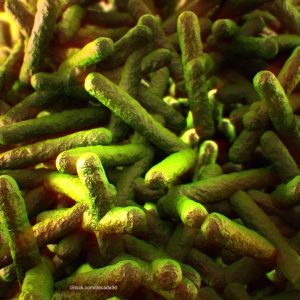Researchers at the University of Wyoming have identified a substance that increases the survival of Listeria monocytogenes bacteria. The substance, called exopolysaccharide (EPS), is a compound that the bacteria secretes on its cell surface. EPA coats the cells so they can clump together. That protects them from disinfectants and drying.
 Dr. Mark Gomelsky, a professor at UW’s Department of Molecular Biology said in a statement, “we think that EPA plays a significant role in survival of Listeria in the environment, during food storage, processing, and transportation. Listeria rarely causes serious disease in healthy individuals but, in immune-compromised people, elderly and pregnant women, it can be deadly, causing as much as 20 percent to 25 percent mortality.”
Dr. Mark Gomelsky, a professor at UW’s Department of Molecular Biology said in a statement, “we think that EPA plays a significant role in survival of Listeria in the environment, during food storage, processing, and transportation. Listeria rarely causes serious disease in healthy individuals but, in immune-compromised people, elderly and pregnant women, it can be deadly, causing as much as 20 percent to 25 percent mortality.”
The scientists are using chemical agents to discover the role that EPS plays in protecting the pathogenic bacteria. Chemicals such as bleach and hydrogen peroxide killed cells that did not produce EPA, but cells in clumps coated with EPS were very protected even against bleach.
Volkan Koseoglu, a UW student in the Molecular and Life sciences Ph.D. program said, “you can readily kill Listeria cells with a disinfectant like bleach, but you can’t easily kill clumped cells.” Dr. Gomelsky said that the resistance to bleach in EPS-coated clumps increases by more than 10,000,000 fold.
Other research at the University of Kentucky found that EPS did not change the ability of the bacteria to cause disease, since mice got sick at similar rates whether they ate EPS-coated or non-coated bacteria. EPS affects how the bacteria survives on food products. Researchers are trying to determine the sugar composition of EPS to discover how to inactivate it. They want to stop Listeria bacteria from producing the compound and make EPS-coated bacteria less resistant to disinfectants.




